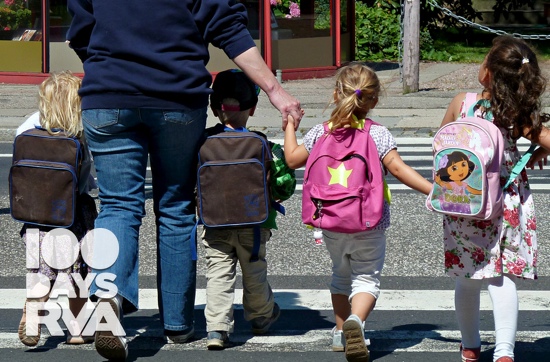Day #028: School boxes
How thinking inside the box could send a serious message about infant mortality and education.

Inspired by Michael Bierut’s 100 Day Project, 100 Days to a Better RVA strives to introduce and investigate unique ideas to improving the city of Richmond. View the entire project here and the intro here.
- Idea: “Baby boxes” but more likely “school boxes”
- Difficulty: 3 — Paternalism, funding, and giving up something that’s “free” would be challenges.
Like most of this country, Richmond has a wide variety of children who live in a wide variety of conditions. Despite being the wealthiest nation on Earth and ranking 14th in GDP per capita controlled for purchasing power parity, the United States lags in both infant mortality and education.
The U.S. is entirely pedestrian when it comes to infant mortality. Our 6.17 deaths/1,000 live births is middle of the pack and lags behind Cuba (4.70), Greece (4.78), and Guam (5.51). Plenty can be said about the size and diversity of the United States. More can be said about data gathering and reporting, but the fact of the matter is 16 million American children lived below the poverty line in 2010 and little progress has been made since then.
Since the 1930’s, Finland has tried improving children’s lives with “baby boxes.” Every expecting family has the choice between a baby box complete with items such as baby nail scissors, diapers, baby books, shoes, gloves, a sleeping bag, and the box (which acts as a crib), or a 140 Euro (~$187) cash stipend.
Whether or not this is responsible for Finland’s (3.36) low infant mortality rate is close to impossible to prove, but it sends a serious message to new parents: your child is important and our country will be better off if your child is better off.
The US is different than Finland. In addition to having 60+ times the population, more diversity, and different geography, the US has a very different culture.
School Boxes
“Baby boxes” are unlikely in the United States, but what if every two or three year old received a cheaper “school box”?
American students at the top and bottom are lagging. While scores on the Programme for International Assessment (PISA) have remained consistent, countries around the world have leap-frogged the United States. Keep in mind two of the three states tested by the PISA are Massachusetts and Connecticut.1 Plenty more can be said about the testing methods and sampling error, but it’s no secret that students everywhere from Finland and Germany to rural Vietnam2 and urban Shanghai are outpacing Americans.
The story is even worse for students in poverty. Students below the poverty display higher levels of absenteeism and dropping out. 40% are unprepared for primary schooling, are already two years behind grade level in fourth grade, and are four years behind by 12th grade.
Richmond could start a pilot program. Preschool-aged children would either receive a box with books, school supplies, a backpack, etc. worth $1503 or a $100 cash stipend. I don’t know the evidence behind the value of providing students supplies. I do know there is a correlation (not causation) between the number of books owned and a child’s success.
Funding
Virginia spends over $10,000 per student per year. On top of that, the federal government gives four-figure tax deductions for children. Both of these could go untouched if Virginia got rid of its tax-free weekend for school supplies.
The tax-free weekend allows parents to shop for back-to-school items without paying the 5.3% state/local tax on individual school supplies below $20 and shoes below $100. If a family spends $500 on qualifying items, they save $26.50. Year in and year out, this is a little perk, but it isn’t changing lives.
“School boxes” would be less equal and more progressive, but they would also have a stronger impact on those who need help the most. If the poverty line is $23,021 for a family of four, then saving 5.3% on what is undoubtedly less than $500 worth of school supplies doesn’t prepare children for school.
The children who need help the most–the 40% of children in poverty who are already behind before stepping foot in Kindergarten–are helped the least by the tax free weekend and could be helped more by a “school box.”
“School boxes” would send a serious message to students and parents about society’s value of education.4
Love this idea? Think it’s terrible? Have one that’s ten times better? Head over to the 100 Days to a Better RVA Facebook page and join in the conversation.
Photo by: aka Jens Rost
- MA is regularly chosen as the best state for public education and Connecticut is both highly educated and affluent. ↩
- “But countries like Vietnam, where 79 percent of students are economically disadvantaged outscored U.S. students in math.” ↩
- This $150 could also be divided in multiple ways. Maybe $50 boxes at three-years-old, the start of middle school, and the start of high school would be more effective? ↩
- Then again, we could just get rid of the tax-free weekend and throw $20 bills on the desks of students before standardized tests. ↩
-
Recommend this
on Facebook -

Report an error
-

Subscribe to our
Weekly Digest





Notice: Comments that are not conducive to an interesting and thoughtful conversation may be removed at the editor’s discretion.